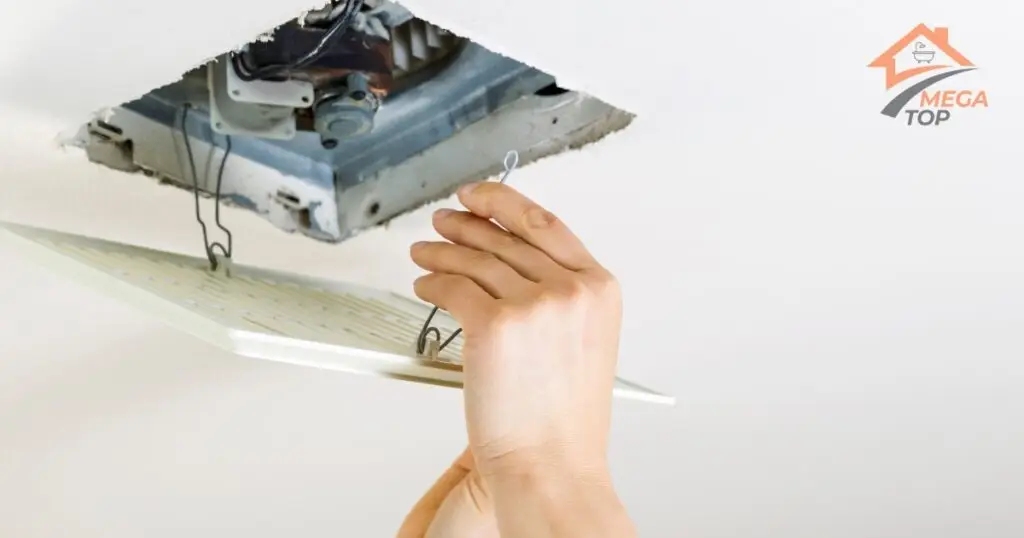Common Reasons for Replacing a Bathroom Fan
- Old fans often fail to ventilate properly, leading to moisture buildup.
- Noisy or inefficient fans may need upgrading for better airflow and quieter operation.
- Upgrading to energy-efficient models can lower electricity costs and improve performance.
DIY Fan Replacement: What You Need to Know
- Basic tools like a screwdriver, ladder, and voltage tester are essential for a DIY job.
- You should have experience with electrical wiring to safely disconnect and reconnect the fan.
- Incorrect installation could result in poor ventilation or electrical issues.
How Electrical Wiring Affects Bathroom Fan Installation
- Bathroom fans require proper wiring to handle both the electrical load and grounding.
- New installations or replacements often need updated wiring to meet safety standards.
- If your fan is hardwired into your home’s electrical system, improper handling can lead to electrical shorts or fire hazards.
Why Hiring an Electrician for Bathroom Fan Installation is a Smart Choice
Ensuring Proper Wiring and Electrical Safety
- Electricians are trained to work with wiring systems, ensuring all connections are correct and grounded.
- They also check that the electrical circuit can handle the fan’s power requirements, preventing overloads.
Benefits of Professional Installation Over DIY
- Hiring a professional ensures compliance with building codes and safety regulations.
- Electricians can identify and fix any underlying electrical problems that may interfere with fan performance.
- It eliminates the risk of errors that could cause malfunction or damage.
How Electricians Help Meet Building Codes and Standards
- Local building codes often have specific requirements for bathroom ventilation systems.
- Electricians ensure that the fan is correctly vented outside to prevent moisture damage inside walls or ceilings.
- They make sure the installation follows safety standards to avoid issues during home inspections or future sales.
Key Steps in the Bathroom Fan Installation Process
Choosing the Right Bathroom Fan for Your Space
- Fans come in various sizes based on the square footage of your bathroom.
- Choose a fan with the correct cubic feet per minute (CFM) rating to ensure adequate ventilation.
Tools and Materials Required for Installation
- Key tools include a voltage tester, wire connectors, drill, and ducting for ventilation.
- You’ll also need mounting hardware specific to your fan model and any necessary wiring or duct extensions.
Installing the New Fan: A Step-by-Step Overview
Removing the Old Fan
- Shut off the power at the circuit breaker.
- Remove the fan cover, then unscrew and disconnect the old fan from the wiring.
Connecting Electrical Wires
- Match the wires from the new fan to the existing ones, typically using wire nuts to secure connections.
- Ground the fan properly to ensure electrical safety.
Securing the New Fan in Place
- Attach the fan housing to the ceiling joists with screws.
- Install the fan cover and connect the ductwork to vent air outside the home.
Common Mistakes to Avoid When Replacing a Bathroom Fan
Incorrect Wiring Connections
- Misconnecting wires can lead to malfunction or electrical hazards like shocks or shorts.
- Always double-check wiring diagrams and use a voltage tester to ensure the circuit is not live.
Inadequate Venting Solutions
- Venting the fan into the attic or other enclosed spaces can lead to moisture buildup and mold.
- Proper ductwork should lead directly to an exterior vent to expel humid air outside.
Choosing the Wrong Size Fan for Your Bathroom
- A fan that’s too small won’t remove enough moisture, while a too-large fan may waste energy.
- Always match the fan’s CFM to the bathroom’s square footage to ensure effective ventilation.
Compare DIY vs Professional Services
Risks of DIY Bathroom Fan Installation
- DIYers may lack the knowledge to handle electrical wiring safely, leading to shocks or short circuits.
- Improper venting can result in long-term moisture damage and mold growth inside walls or ceilings.
- Mistakes during installation may require costly repairs down the road.
Advantages of Hiring an Electrician for the Job
- Professionals have the expertise to handle all aspects of installation, including wiring, venting, and mounting.
- Electricians can ensure the fan complies with building codes, preventing issues during inspections.
- Hiring a licensed electrician reduces the risk of future problems, ensuring a reliable and long-lasting installation.
Real-Life Case Studies: DIY Fan Installation Gone Wrong
- Homeowners who skipped professional help often face issues like fan noise, ineffective ventilation, and electrical hazards.
- Improper wiring has been known to cause short circuits, leading to potential fire risks.
- Many DIYers end up needing to call professionals later to fix mistakes, increasing the overall cost of the project.
FAQ
While it's possible, improper wiring or installation can lead to safety risks. It's recommended to hire a professional electrician to ensure everything is up to code.
The cost can vary based on your location and the complexity of the installation. Getting a quote from a licensed electrician ensures an accurate estimate.
Poor ventilation can cause moisture buildup and mold issues. An electrician can inspect the fan and venting system to ensure proper airflow.
A typical installation takes about 1 to 2 hours. Hiring a professional ensures the job is done efficiently and safely.
Yes, electricians are equipped to handle both the electrical wiring and the installation process, ensuring a smooth and safe operation.





